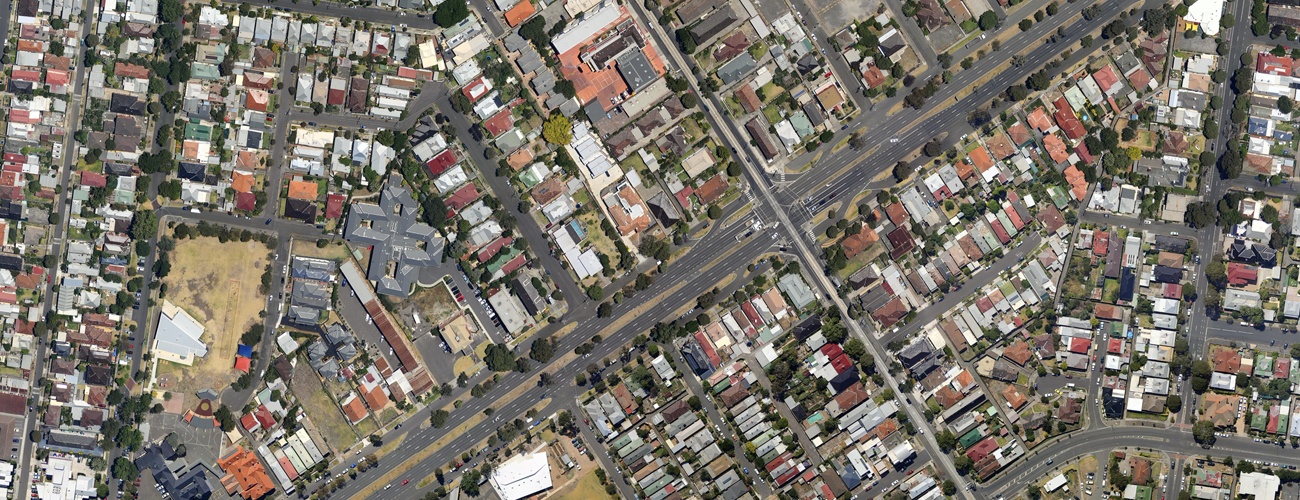The SIDRA MODEL FUNDAMENTALS online training program consists of 3 Modules. The sections below give important information about this training program.
Download this page: PDF - 106 KB
Last Revised: 21 Jan 2022
Right-Hand Traffic | US Customary
The content of this training program has been prepared according to driving on the right-hand side of the road and using US Customary units.
Module A
Topic A1: Traffic Models - An Introduction
Model Benefits / Objectives, Model Consistency, Movement Classes. Analytical and Microsimulation Models, Model Categories, Model Types, Model Level of Detail, Lane-Based Modeling. About Microsimulation Models. Model Complexity vs Model Error.
Uncertainty: Accuracy and Precision, Decisions based on traffic modeling, Understanding Traffic Models.
Topic A2: Fundamentals of Traffic Flow
Uninterrupted and Interrupted Flows, Three Key Parameters, Headway - Spacing - Speed relationship. Density and Flow Rate.
Exercise A2
Speed, Spacing, Headway, Density, Flow Rate
Topic A3: Uninterrupted Flows
Definition, Spacing - Speed - Flow, Other Fundamental Relationships, Speed-Flow Models for Uninterrupted Traffic Facilities. Spot Speed, Travel Speed and Travel Time. Bunched Headway Model, Proportion Bunched for Uninterrupted Flows, Extra Bunching for Upstream Signal Effects. Arrival Headway Distributions.
Exercise A3
Proportion Bunched and Extra Bunching
Q&A
Topic A4: Interrupted Flows
Definition, Conflict points at intersections. Choice of intersection type: Signals vs Roundabouts. Traffic Control (Intersections, Crossings, Interchanges). Alternative intersections and interchanges, SIDRA INTERSECTION Network Templates. Summary of Models for Traffic Control (Interrupted Flow).
Topic A5: Demand, Capacity, Degree of Saturation
Demand Flows, Peaking. Residual Queue and Oversaturation Delay. Capacity, Degree of Saturation, Practical Capacity.
Exercise A5
Saturation Flow Rate and Degree of Saturation
Topic A6: Lane Flows and Unequal Lane Use
Causes of Unequal Lane Use at Intersections. Unequal Lane Use at Closely-Spaced Intersections. Lane Utilisation Ratio. Approach Capacity (Effective). Unequal Lane Use Example. Defacto Exclusive Lanes.
Exercise A6
Lane Utilisation Ratio and Approach Capacity (Effective)
Q&A and Training Evaluation Survey
Module B
Topic B1: Saturation Flow
Saturation Flow Rate and Speed, Queue Discharge Surveys. Saturation Headway Model. Saturation Flow, Start Loss, End Gain. Displayed and Effective Green Times. Saturation Flow Survey, SCATS MF. Short Lane Saturation Flow, Short Lane Queue.
Exercise B1:
Saturation Headway and Saturation Flow Rate
Topic B2: Saturation Flow Estimation
Saturation Flow Estimation in veh/h, Movement Class and Turning Vehicle Effects. Flow Rate and Saturation Flow Rate in veh/h and tcu/h. Shared Lane Saturation Flow Rate. Right Turn On Red Capacity Estimation.
Q&A
Exercise B2:
Shared Lane Saturation Flow Rate
Topic B3: Traffic Signal Timing
Signal Timing Analysis Methods (EQUISAT / Pretimed and Actuated). Appropriate Cycle Time option according to the objective of modeling. Signal Phasing, Variable Phase Sequence Analysis. Common Control Groups. Critical Movement Diagram.
Exercise B3:
Critical Movement Diagram
Topic B4: Pedestrians
Pedestrian Crossing Types (Signalised Intersections, Midblock Crossings). Pedestrians at Signals, Pedestrian Protection. Pedestrian Crossing Distances and Speeds, Pedestrian Minimum Time, Pedestrian Timing Parameters. Pedestrian Actuation. Unsignalised Pedestrian Crossing Analysis.
Exercise B4:
Pedestrian Minimum Time
Topic B5: Traffic Signal Coordination
Signal Platoon Patterns, Platoon Ratio, Arrival Type. Platoon Dispersion Model. Offset Definition, Relative Offset, Stopline Travel Time. Time-Distance Diagram.
Exercise B5:
Platoon Ratio and Arrival Type
Q&A and Training Evaluation Survey
Module C
Topic C1: Roundabouts
Roundabout Capacity Models, Unequal lane use cases as observed at UK Roundabouts. SIDRA Roundabout Capacity Model. Capacity model with roundabout approach interactions. Follow-up Headway and Critical Gap, A useful rule of thumb for gap acceptance parameters, Other Features of SIDRA Roundabout Model, Bunched Headway Model, Geometry parameters. Capacity Constraint, Unbalanced Flows, Roundabout Metering Signals.
Exercise C1:
Circulating Flow Rate with Capacity Constraint
Topic C2: Sign Control
Gap Acceptance Model (Driver Behavior Focus), Gap Acceptance Parameters (Base values and Adjustments), Movement Class Effects, Opposing Flow Effects. Gap Acceptance Model by Signal Analogy. Gap Acceptance Survey Method.
Exercise C2:
Critical Gap and Follow-Up Headway Adjustment
Q&A
Topic C3: Intersection Performance and Level of Service
Delay definitions, Queue definitions. SIDRA Performance Estimates. Back of Queue Survey, Back of Queue, Queue Move-ups, Delay. Overflow Concept, Fundamental Diagram of Intersection Performance. Level of Service (Intersection, Network, Route).
Vehicle Path Model, Acceleration - Deceleration Models. Fuel Consumption and Emissions, Operating Cost.
Exercise C3:
Level of Service
Topic C4: Model Calibration
Local Conditions and Model Calibration. Key Model Calibration Parameters. SIDRA Excel Applications for Field Surveys. Signal Saturation Flow Example. SIDRA Lane-based INTERSECTION and NETWORK model. Iterative Methods for Intersection and Network Modeling.
Exercise C4:
Saturation Flow Calibration
Topic C5: Network Modeling
Lane Blockage and Capacity Constraint. SIDRA NETWORK Model. Signalised Diamond Interchange (SDI), Diverging Diamond Interchange (DDI), Continuous Flow Intersection (CFI). Lane Movement Flow Proportions. Capacity Constraint Example. Capacity Reduction due to Lane Blockage, Midblock Lane Changes.
Exercise C5:
Capacity Reduction due to Lane Blockage
Q&A and Training Evaluation Survey
Please note: Specific software use topics are outside the scope of the SIDRA MODEL FUNDAMENTALS training program. The INTRODUCTION TO SIDRA online training program is available for training in software use.
Enquiries
Online
Please use our Contact Form for all technical support, sales, training and general enquiries.
Phone
Telephone: +61 3 9830 7123
Mobile: +61 423 024 372
Office hours
Monday to Friday
9.00 am to 5.00 pm AEST
Current AEST
